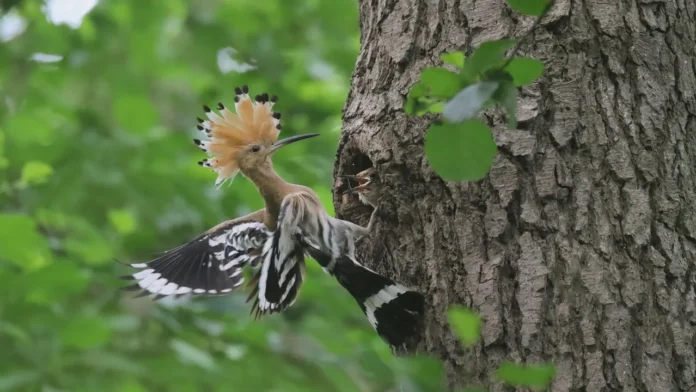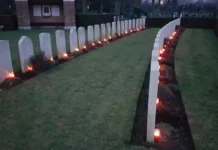The hoopoe, a bird, recognised by its light brown crest and is most often found in Africa, Asia and parts of Europe, has hatched a nest in Leenderbos, which is a rarity. Even more intriguing is that a little further up, a number of unique bees were found in Heeze as well.
This is noteworthy because it is only the fifth time in almost 50 years that this rare bird, and with a family, has built a nest in the Netherlands. “We have kept quiet about the presence of the breeding pair to avoid disturbance. Now that the young have fledged, we can share this news,” says forester Erik Schram.
“It is also no coincidence that the hoopoes have chosen the Leenderbos as a breeding location”, Staatsbosbeheer says. “The bird would need an open landscape with arid grasslands, interspersed with forest.”
Bird fields
“Special bird fields have been created here, and the landscape variation in the Leenderbos is great, which is attractive for many animal species,” says Schram. The bird was also found in the area last year. Then a pair hatched a nest in the nature reserve De Plateaux-Hageven, between Valkenswaard and Lommel in Belgium.
At the same time, three bee species were found at a nature cemetery in Schoorsveld in Heeze, usually not found within the provincial boundaries. These are the small anthophora (flower) bee, the blue carpenter bee, and the large resin bee. The latter two species had not been observed in Brabant for 40 years. The anthophora bee was also hardly seen for decades but has become more common in recent years.
Heat
Climate change plays a role in the return of bee species, says Jap Smits – former forester on Strabrechtse Heide. “They are heat-loving species; they move more to the north as it gets warmer. The climate has certainly influenced this.”
Nitrogen
But the nitrogen crisis also plays a role in the arrival of the insects to the natural cemetery. “As a result, bare sandy soils, where the three species make their nests, have become rare. In addition, there must also be a considerable amount of flowering plants on those soils. That combination is scarce in the Netherlands. The conditions at Schoorsveld are ideal. Five years ago, before this development in the natural habitat, the little anthophora bee would never have come here.”
Source: Studio040
For Eindhoven News: Lila Mehrez
















